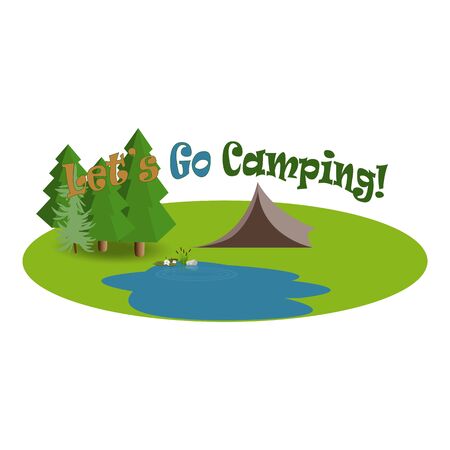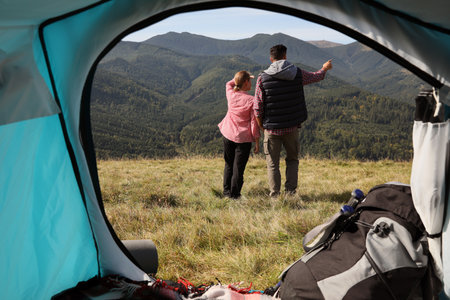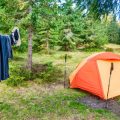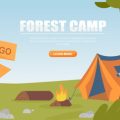1. Choose Budget-Friendly Campgrounds
One of the easiest ways to save money on a camping trip is by choosing the right place to camp. While popular campgrounds in national parks can be beautiful, they often come with higher fees and require reservations months in advance. Luckily, there are plenty of affordable—and sometimes even free—alternatives that still offer amazing outdoor experiences.
Explore Public Lands
National forests, state parks, and Bureau of Land Management (BLM) lands are excellent options for budget-conscious campers. These public lands often have lower nightly rates compared to private campgrounds or heavily trafficked national parks. Some BLM areas even allow dispersed camping for free, as long as you follow Leave No Trace principles and local regulations.
Comparison of Budget-Friendly Camping Options
| Campground Type | Typical Cost (per night) | Reservation Needed? | Amenities |
|---|---|---|---|
| National Forests | $10–$20 | Sometimes | Fire rings, vault toilets, picnic tables |
| State Parks | $15–$30 | Usually | Restrooms, showers, water access |
| BLM Land (Dispersed) | Free–$10 | No | Limited or no amenities |
Tips for Finding Affordable Campsites
- Use apps like The Dyrt, Campendium, or FreeRoam to locate low-cost or free campsites.
- Look for lesser-known areas that are still close to hiking trails, lakes, or scenic views.
- If youre flexible with your travel dates, go during the off-season to find better rates and fewer crowds.
Pro Tip:
If you’re okay with fewer amenities, dispersed camping on BLM or national forest land can be an amazing way to enjoy nature without spending much at all. Just make sure to check local rules before setting up camp.
2. Use What You Already Have
One of the easiest ways to save money on a camping trip is by using gear and supplies you already own. Before heading to the store or browsing online, take inventory of what’s already in your garage, closet, or basement. You might be surprised at how much camping-ready gear you already have lying around.
Repurpose Everyday Items
You don’t always need specialized camping gear. Many household items can double as camp essentials. For example, use plastic bins for storage, old blankets instead of sleeping pads, or kitchen tongs and foil for cooking over a fire. Get creative and think outside the box!
Borrow from Friends or Family
If you’re missing some key items like a tent or portable stove, ask around before making a purchase. Most campers are happy to lend out their gear — especially if they’re not using it that weekend. Borrowing is a smart way to try out equipment without committing to a big expense.
Common Gear You Can Repurpose or Borrow
| Item | Use What You Have | Ask to Borrow |
|---|---|---|
| Tent | Pop-up canopy with tarp sides | Borrow from an experienced camper friend |
| Sleeping Bag | Comforter or heavy blanket in a stuff sack | Check with family members who camp |
| Cooking Gear | Home pots/pans + aluminum foil | Portable stove or grill from a neighbor |
| Cooler | Large insulated grocery bags or containers | Extra cooler from a friend |
Make a Checklist Before Buying Anything New
Create a checklist of what you really need versus what would just be nice to have. Stick to the essentials first, then decide if any “extras” are worth purchasing later. This approach helps keep your camping trip fun and budget-friendly.

Plan Simple, Affordable Meals
One of the easiest ways to stick to your camping budget is by planning meals that are both low-cost and satisfying. You don’t need gourmet ingredients or fancy cooking gear to eat well outdoors—just a little preparation and smart shopping.
Stick to Bulk Ingredients
Buying in bulk can significantly cut down your food expenses. Staples like rice, pasta, canned beans, oats, and potatoes are not only cheap but also filling and versatile. You can use them in multiple meals during your trip.
Examples of Budget-Friendly Bulk Ingredients:
| Ingredient | Average Cost (per lb) | Meal Ideas |
|---|---|---|
| Rice | $0.80 | Cilantro lime rice, stir-fry foil packets |
| Pasta | $1.00 | One-pot campfire mac & cheese |
| Canned Beans | $0.75 | Chili, taco bowls, breakfast scramble |
| Oats | $0.90 | Overnight oats, oatmeal with dried fruit |
| Potatoes | $0.60 | Baked potatoes, hash browns, foil packet meals |
Go for Easy-to-Make Camp Meals
You don’t have to be a campfire chef to cook something delicious. Focus on simple recipes that require minimal prep and cleanup. Foil packet dinners are a camper’s best friend—you just toss ingredients together, wrap them in foil, and cook them over the fire. Try mixing chopped veggies, sliced sausage or chicken, olive oil, and some seasonings for an easy all-in-one dinner.
Another go-to option is campfire chili. Use ground beef or turkey, canned beans, diced tomatoes, onions, and chili seasoning. Make a big batch early in the trip and enjoy it for multiple meals.
Prep Meals at Home When Possible
Simplify your campsite routine by prepping meals ahead of time at home. Chop veggies, marinate meats, or pre-mix pancake batter and store it in resealable bags or containers. This saves time at the campground and reduces waste.
Pro Tip:
If you’re bringing a cooler, freeze some meals before your trip so they double as ice packs and stay fresh longer.
4. Get Creative with Free Activities
One of the best parts of camping is that many outdoor activities are completely free and still packed with fun. You don’t need to spend money on fancy gear or guided tours to have a memorable adventure. With a little creativity, you can fill your camping trip with exciting, no-cost activities that everyone will enjoy.
Fun and Free Outdoor Activities
Whether youre camping with friends, family, or solo, there are plenty of ways to make the most out of your trip without spending extra cash. Here are some ideas:
| Activity | Description | What You’ll Need |
|---|---|---|
| Hiking | Explore nearby trails and take in scenic views. It’s a great way to get exercise and connect with nature. | Comfortable shoes, water bottle, map or trail app |
| Stargazing | At night, lay back and enjoy the stars away from city lights. Try spotting constellations or make up your own. | Blanket or sleeping bag, star map app (optional) |
| Swimming | If your campsite is near a lake or river, take a dip! It’s refreshing and totally free. | Swimsuit, towel, water shoes (optional) |
| Nature Scavenger Hunt | Create a list of things to find in nature—like pinecones, animal tracks, or colorful leaves—and see who can find them all first. | Paper and pen, optional small prizes for fun |
Make It a Group Effort
These free activities are even more fun when shared. Get everyone involved in planning hikes or coming up with scavenger hunt items. You’ll create lasting memories without needing to open your wallet.
Use What Nature Offers
The beauty of camping is that nature itself is the playground. From sunrise walks to skipping rocks by the shore, it doesn’t take much to have a great time. Keep an open mind and you’ll be surprised at how entertaining simple moments can be.
Pro Tip:
If youre camping at a national park or forest, check their visitor center or website for free ranger-led programs like wildlife talks or night sky viewing events—theyre educational and cost nothing!
No matter where you camp, embracing free activities lets you focus on what really matters: enjoying the outdoors and making memories with the people youre with.
5. Travel Smart
When youre trying to plan a fun camping trip on a budget, how you get to your campsite can make a big difference. Traveling smart helps you save money without cutting back on the adventure. Here are some easy ways to keep your travel costs low while still having a great time outdoors.
Carpool With Friends
One of the easiest ways to save money is by sharing the ride. Carpooling with friends or family not only cuts down on gas expenses but also makes the road trip part of the fun. You’ll have more chances to bond, share stories, and split costs like parking fees or tolls.
Choose Nearby Destinations
You dont have to drive across the country to enjoy nature. There are probably hidden gems within an hour or two from where you live. Local state parks, national forests, or even county campgrounds can offer beautiful scenery and plenty of activities—without burning through your gas budget.
Distance vs. Fuel Cost Example
| Destination Distance (Round Trip) | Estimated Gas Cost* |
|---|---|
| 50 miles | $10 |
| 150 miles | $30 |
| 300 miles | $60 |
*Estimates based on $4/gallon gas and 20 MPG vehicle
Packing Efficiently
A well-packed car can save you from unexpected purchases once youre at the campsite. Make a checklist ahead of time so you don’t forget essentials like cooking gear, bug spray, or flashlights. Buying these items last-minute at park stores or gas stations often means paying way more than necessary.
Packing Tips:
- Create a shared packing list with friends using Google Docs or an app like Trello.
- Avoid overpacking—bring only what youll use.
- Use storage bins to keep things organized and easy to find in the car.
If you pack smart and travel efficiently, you can focus more on enjoying your adventure—and less on your expenses.


